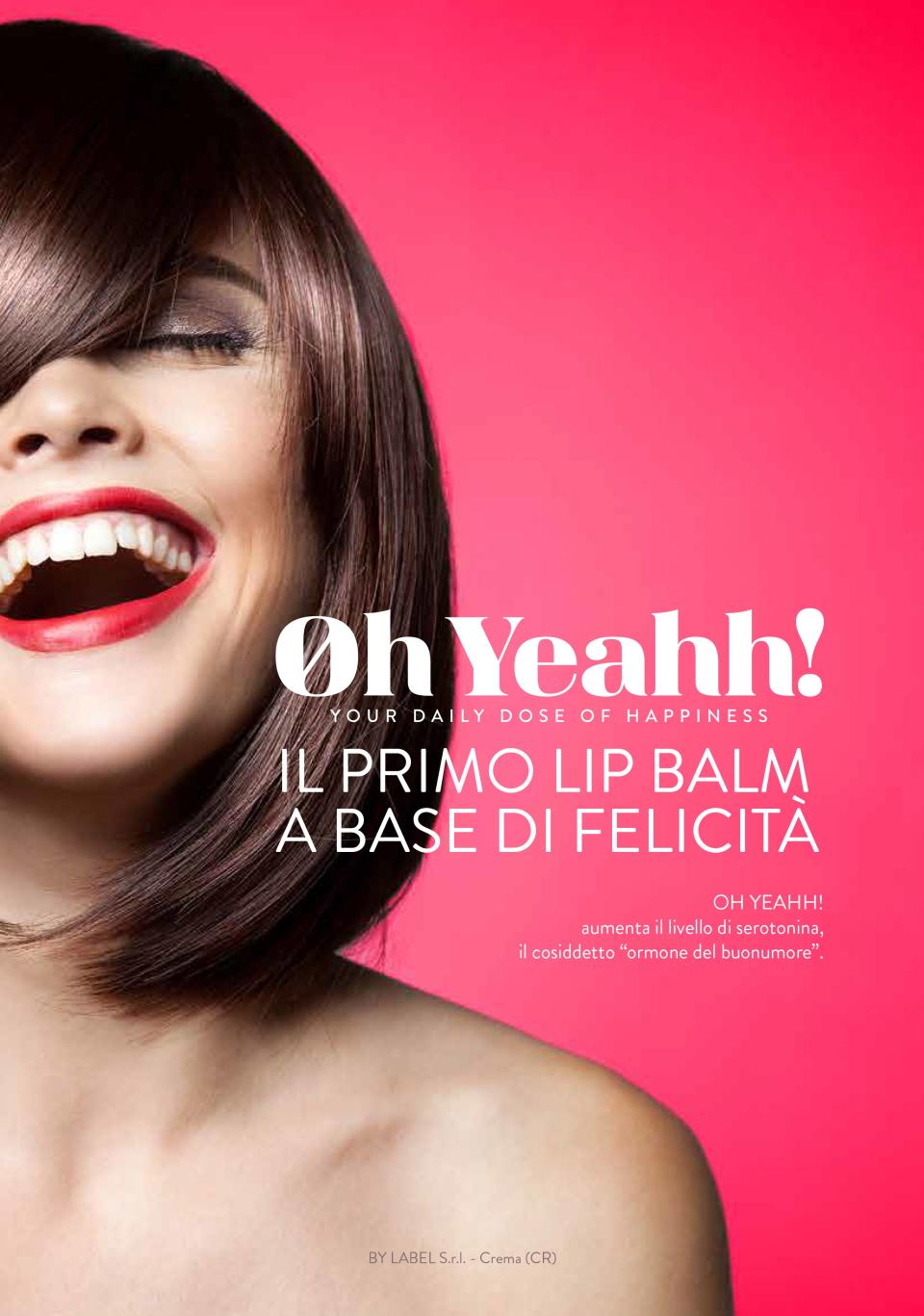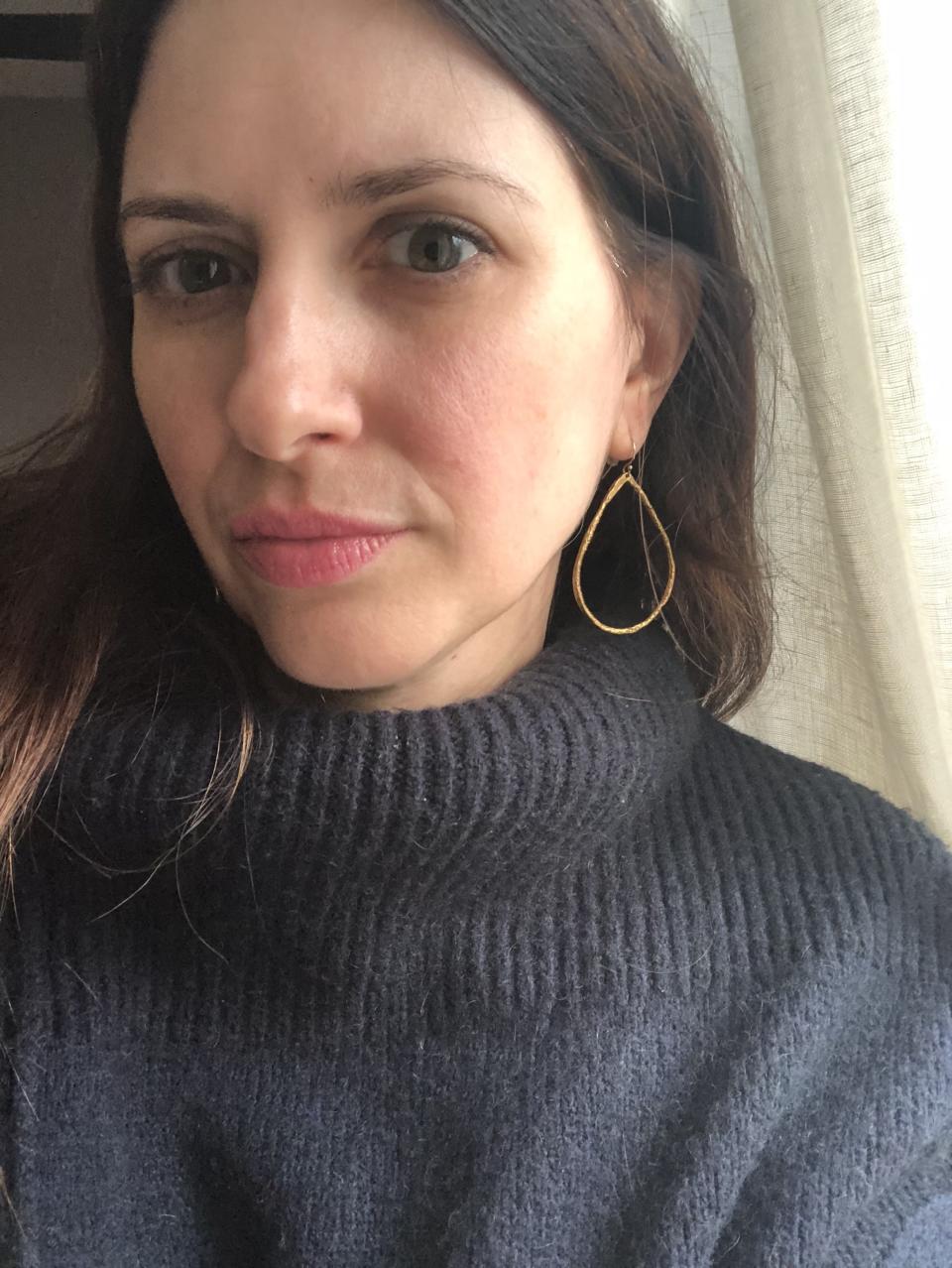I Tried Oh Yeahh!, the Serotonin-Boosting Lip Balm That Promises to Make You Happier
Oh Yeahh! It sounds like a lusty moan from an old Stormy Daniels flick, but it’s actually the name — exclamation point included — of something far less titillating. But provocative nonetheless.
Available in five hues, this tinted lip balm out of Italy promises a “daily dose of happiness” by increasing the levels of serotonin in your saliva by 280 percent in half an hour. Serotonin, or “the happiness hormone” as its called, is a neurotransmitter that helps regulate, among other things, mood. As an editor with a background in beauty and health, this incredible promise piqued both my innovation and BS meters.

Serotonin is a clutch chemical for those with depression and anxiety disorders, who may have fewer brain receptors for the serotonin to bind to, or have a breakdown at the serotonin synapses, the pathways that deliver signals between brain cells, says psychiatrist Sue Varma, a clinical assistant professor of psychiatry at the NYU Langone Medical Center. In fact, per the Mayo Clinic, the most commonly prescribed antidepressants are Selective Serotonin Reuptake Inhibitors (SSRIs). These meds block serotonin from “reuptake” (or from being absorbed), allowing it to “hang out long enough to do its job,” says Varma.
How the balm works, I learn from Oh Yeahh! product manager Fabio Faciocchi, is by depositing cocoa, kiwi extracts, and African plant griffonia simplicifolia, all ingredients rich in tryptophan, the precursor of serotonin. The 280 percent/30 minutes claim came from a clinical study done by Farcoderm, a testing institute, in concert with researchers from the University of Pavia (“the most famous in Italy for medicine,” Faciocchi says). Unfortunately, I can’t make heads or eyelashes of the data chart he shares with me, which doesn't look like a typical clinical study. When I send it to Varma, neither can she.
I ask to see the full study materials, but Faciocchi, ever polite and apologetic, says “the board” isn’t giving permission to share those with journalists. So I decided to put the balm to another test: one taking place on my own lips and brain.
Day 1, October 5: Then-Supreme Court nominee Brett Kavanaugh gets all the “yes” votes he needs, leaving me in sporadic tears all day. Even the most potent serotonin booster would fall flat against these feelings, though I still paint on the Pink balm, a bubblegum hue. Nothing happens.
October 6: When I pull out the Pink again, I notice the metallic sheen of the tube (festive!) and that there’s no smell or flavor. I head to karate. I’m far less emotionally troubled today, but is it the balm or the exercise-induced endorphins?
October 7: Whoops. Amidst fall festival activities, I forget about the balm. Instead, I indulge in corn on a stick and apple cider doughnuts and watch my kids bounce in bounce houses.
October 8: I try the Silver — essentially clear — hue, leaving it on my bedside table. I put it on at 7:58 pm as I’m toggling between writing five stories, all basically due at the same time. (In other words: I’m stressed.) The balm feels nice, smooth without greasiness, but somehow, without any color, I’m laser-focused on the lack of taste, which itself has become a taste, one that isn’t super-tasty. Like, if I’m supposed to get as much of this on my mouth and into my saliva, I don’t want to. Still, I layer it on a few more times while binge-ing season 3 of The Man in the High Castle. But alas, I feel no jolly jolt.
October 9: Back to the Pink. Hours post-slicking, I look in the mirror to find, surprisingly, it’s still there — this formula does have staying power, if not the power to make me feel better. My cat had a bout of diarrhea, my husband’s company got crappy news, and — working from home — I’m lonely without company. Come. On. Pink! I need you! I wait…I hope…for some flitter of joy. Later that night, I apply it on repeat in an attempt to chill the eff out when The Man in the High Castle malfunctions repeatedly due to connectivity issues.

The next few days: I switch between Silver and Pink. I send the Violet and Red shades to Varma — they’ll look chic against her medium-toned complexion—and wonder if maybe I’m just too serotonin-damaged. (I do have OCD.)
But…nope. Varma didn’t notice any effects either. She confirms that tryptophan is indeed a precursor to serotonin, but in order to convert, it needs to be ingested. I immediately think of THE LEGEND OF LIPSTICK EATING — a stat that’s often bandied about amongst beauty folk: that women swallow something like five to nine pounds of lipstick throughout their lives.
A quick Google search shows that rumor has been debunked by Snopes. And by futurederm.com, whose intriguing blowout on the topic includes the findings of a 2005 study in the journal Food and Chemical Toxicology. The study found that the average amount of lipstick a woman deposits per application is 10 milligrams. According to that math, in order to consume roughly seven pounds of lipstick in a lifetime, you’d have to apply about 110 milligrams every day for 76 years. So. Yeah. No.
But for the sake of argument, even if you do get that serotonin into your spit, in order to lift your spirits it would need to travel into your bloodstream and up to the brain — two things Varma sees as highly unlikely. “It’s hard to imagine [serotonin] applied topically would have brain changes — or even be absorbed in enough quantity to enter the bloodstream.” She also points out that most prescribed serotonergic agents take far longer than 30 minutes to work — typically two to six weeks — “so I’m on the skeptical side,” she says. “If it had more scent, we could make an aromatherapy argument.”
I also talk to a cosmetic chemist. “There might be some validity to the claims here,” says Ron Robinson, founder of beautystat.com. “The fact that the product contains cocoa, that on its own, if digested, could perhaps help boost your mood similarly to many other foods that you can eat that can do the same thing. But the fact that they have clinical studies that show the increase in serotonin in your saliva does not necessarily mean that serotonin will reach the brain to affect your mood.”
Despite all this, the balm’s got other stuff going for it: Nice colors, SPF 30 (rare for a tinted lip product), and those metallic tubes, which give off a futuristic Judy Jetson vibe. And, says Varma, “there may be a placebo effect for some.” On a melancholy day, that’s not nothing.
Discover more feel-good beauty products below:
Meet Thrive Causemetics, the Vegan Makeup Company With a Philanthropic Mission
9 Wellness Products That Support Good Causes and Help You Relax
8 ways to have an environmentally-friendly beauty routine:

